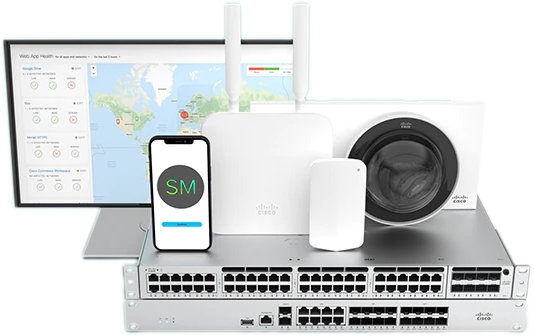Calculating the bandwidth needs for your business should be easy, right? Just pull up your server logs, get an average usage per-employee, then multiply by the number of employees. Take that number, and then pick an ISP and hardware that supports it.
Well... no. Unfortunately, it's not remotely that easy.
The basic truth of the matter is that, in a lot of ways, a business will always need more bandwidth than it thinks. Obviously, this doesn't mean that a small business needs to be investing in 40Gb pipes, but a business's bandwidth needs will almost always exceed the initial estimates.
There are a lot of factors which affect bandwidth consumption. Let's take a look at some of the big ones.

Why You Always Need More Bandwidth Than You Think
1 - Employees find ways to use it.
Most of your employees are going to have a general idea of how much bandwidth is available, and they're sticking inside those limits. When you add more bandwidth, they aren't going to keep doing their work in the same way. They're going to attempt to make use of the improved connections.
In some cases, this will be justified. If a business deals in large multi-gigabyte files, it's only natural workers will be sending more files around once it's convenient. However, this can also lead to increased use of non-business websites, such as YouTube.
You can mitigate this somewhat with user access restrictions, but that won't stop the bandwidth creep entirely.
2 - Smart devices being "too smart."
As the Internet of Things becomes more prevalent, that means more devices in your office which are periodically "phoning home" for updates and information. It's easy to overlook these devices, since one doesn't normally think about commonplace items such as desktop phones using bandwidth autonomously... but they do.
To combat this, your admin will need to keep a close eye on the bandwidth usage of all the "smart" devices in the office. But, even then, it's virtually assured that, just like your employees, your smart devices will use more bandwidth than you initially assume.
The same also goes for most tablets and smartphones. Even when not in use, they'll be using a small amount of bandwidth keeping themselves connected.
3 - Auto-adjusting software.
A lot of VoIP-style applications automatically adjust their resolution\quality settings based on bandwidth available. A large increase in throughput will cause them to adjust themselves accordingly.
Again, this can be overruled with hard settings or server-side restrictions, but it may not be a good idea. Higher-quality VoIP voice\video is generally better for productivity, as well as making communications more pleasant overall. This is probably an area where it's better to accept the higher usage.

4 - Nielsen's Law Of Bandwidth Growth
The well-known media analyst Nielsen's has been tracking bandwidth use back to the 80s, and have found a trend which has thus far continued uninterrupted: Bandwidth needs increase by 50% every year. So even if you're buying plenty of bandwidth for today, chances are good it will be too little within a couple years.
On the plus side, this is constant enough that you can predict for it, and make intelligent decisions on when to add more bandwidth to your connection.
The Bottom Line
If you're looking for a very rough estimate of needs, here are our recommendations:
- 1Mbps per user at a bare minimum
- 4Mbps per for high-definition video or large file transfers
- 8Mbps per for smooth videoconferencing
However, this will, per Nielsen's Law, undoubtedly rise in the future.
Need more help? Just contact Hummingbird Networks for a free consultation on your future bandwidth needs!










